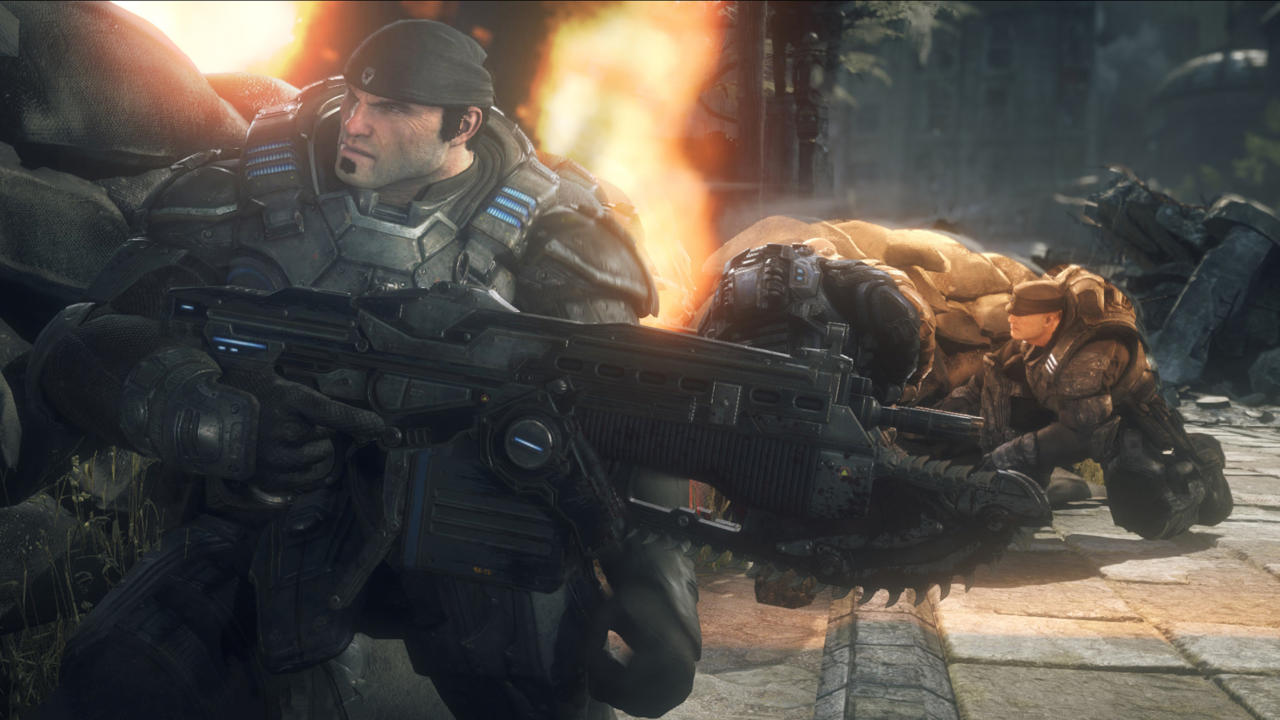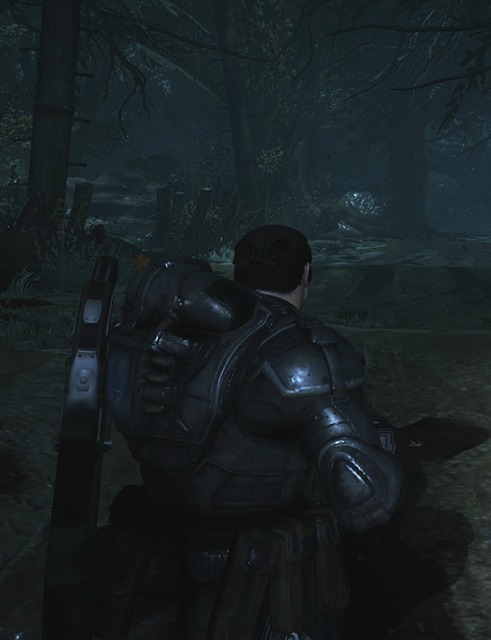Late in the story of Gears of War: Ultimate Edition, Marcus Fenix kicks down the front door of his childhood home. He finds the wallpaper peeling, the furniture in disarray, and a fine layer of dust blanketing every surface.
This return to a dilapidated family home is an echo of the task at hand. Many members of developer The Coalition worked on the original 2006 Gears of War, and this remaster is the studio's first release before it launches Gears of War 4. And although it's created a faithful homage to the game that started it all, some of the furniture is still out of place, and the corners continue to gather dust.
Gears of War: Ultimate Edition lets us cheat time, and travel back to 2006, when we first saw Fenix emerge from that shadowy prison cell. Because of the updated visuals, Gears of War: Ultimate Edition fills in cracks and polishes edges to preserve our ever-so-fragile nostalgia.
I played Gears of War on Xbox 360 recently, and the differences here are apparent: Ultimate Edition removes the muddy textures, shiny faces, and bleak environments of the original, replacing them with detailed landscapes and brighter hues. The Coalition remade every cutscene, and even though I've seen them before, the new 1080p skin makes it feel like the first time. The developer has reversed the game's aging process, making Benjamin Buttons out of every musclebound character.
And Ultimate Edition doesn't just change things on a visual level--it includes a variety of content and design changes. For one, cooperative play is now drop-in, drop-out, and you can join in the middle of a chapter. Ultimate Edition also borrows from the trilogy's sequels, allowing separate difficulty settings for individual players.

There are also five late-game campaign chapters that only ever made it to PC, following Marcus and Dom in their trek toward a train station through abandoned factories, all the while evading a gigantic Brumak. This towering, bipedal monster creates a sense of tension throughout, culminating with a boss battle that out-scales any situation prior.
These chapters fit well in this modern recreation: Ultimate Edition is a reminder of how horror-driven the series was at the beginning, with haunting corridors and dim basements giving way to shrieking monsters inside every air duct. This is a story about a ragtag group of heroes, long before we saw them amidst the chaos of an all-out war. They don't have much depth to them here, and mainly serve as vehicles for masculine jokes and Gears' ubiquitous macho sense of humor. Nonetheless, this more personal campaign serves as a reminder of when we first met them.
But despite how great Ultimate Edition's campaign looks and feels, it hasn't completely erased the original version's blemishes. Throughout my time on the streets, and in the locust tunnels of Sera, my AI partner often made things difficult for me. Dom Santiago deliberately wandered into the shadows when the objective was to stay in the light; he, walked into the path of my gun, obscuring my view numerous times; and often, when my progress relied on the AI pressing a button or turning a switch, nothing happened, and I had to reload my checkpoint.

The latter was a frequent problem throughout my campaign. The first Gears isn't always obvious about where to go next, and the remaster has kept that aspect intact. I reloaded checkpoints a total of five times before I reached Act Five, all because cutscenes wouldn't trigger, or a wall wouldn't crumble on cue. It's one thing to lose progress because of death; it's another to lose it because of the AI.
Replaying the first Gears campaign has also highlighted some of its bigger design flaws. Almost all of your progress relies on simply killing every enemy, and considering it's the first entry in the franchise, there isn't a whole lot of variety in opponents. You enter a room; you clear it; you proceed.
There are rare brilliant moments--luring the berserker outside so as to pummel it with a satellite blast, for instance--but by and large, most of the campaign is a matter of killing a very specific number of Locusts. Couple this with the fact that certain opponents didn't attack until I searched extensively for them, only to find them stuck behind cover, and the later chapters became a slog.
But playing with a friend has always been my favorite way to play Gears, and in this modern version, that sentiment remains the same. My friend was more reliable than Dom's default AI, and the branching paths of the trilogy's early missions still create emergent situations where flanking is just as important as accuracy and timing--and killing waves of enemies. The Gears franchise has always catered to a cooperative experience, and the remaster is no exception.
Ultimate Edition is a reminder of how far the series has come.
These tenets ring true in Ultimate Edition's multiplayer as well, and this is where the remaster truly shines. The Coalition made the upgrade to 60fps, resulting in a much smoother, more fluid experience than I had on Xbox 360. There are also new game modes and a brand new map to play on, but these additions paled in comparison to the nostalgia trip I experienced on my favorite maps: Gridlock, Tyro Station, and Depot, to name a few.
All of my muscle memory came back in a matter of minutes. I hip-fired the gnasher shotgun, perfected active reload times, and dodged between cover as if it was nine years ago. The multiplayer still transitions between measured approaches and frantic firefights on a whim, displaying a dynamism that has aged well. Gears of War Ultimate Edition doesn't just look like my nostalgia remembers--it also feels like it, too.
In returning to the game that sparked one of Microsoft's more prevalent franchises, members of the Coalition kicked down their own proverbial childhood door. The return trip might have revealed a few more cracks than we remembered, but it also serves as a shield for our nostalgia. And as remakes go, that's worth the journey home.